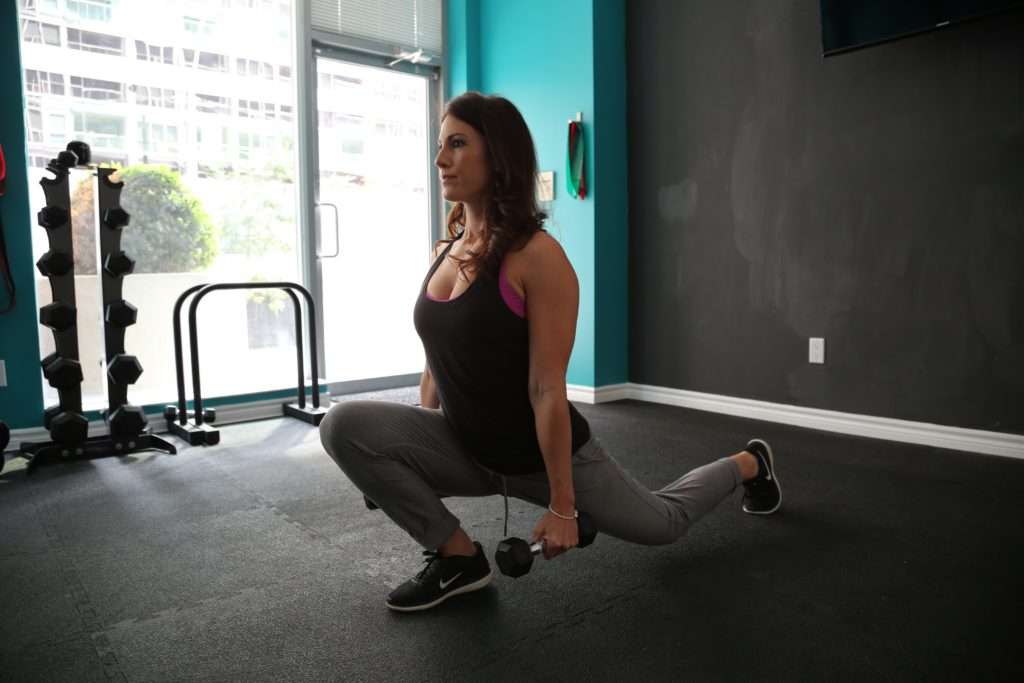
The Great Debate: Weight Training vs Cardio for Fat Loss
There is much discussion on which is better for fat loss and overall health: cardio or weight training? While some people enjoy their aerobic exercises, others are devoted weightlifters. Which one, nevertheless, is superior for losing fat? That’s what our purpose is to discover. In this blog, we’ll go through deeply into the world of fitness to uncover the true narratives behind these two popular strategies. One method to boost metabolism and gain muscle mass is through weight training. On the other hand, aerobic activity burns calories and raises heart health. We’ll discuss how doing cardio exercises causes your heart to race and your body to perspire, while lifting weights can help you build muscle and maintain a healthy metabolism.
Optimising Fat Loss for Weight Training and Cardio: A Holistic Approach
It’s critical to take a holistic approach that incorporates both workout modalities with a well-balanced diet in order to lose fat, considering weight training versus cardio. To increase lean muscle mass, which boosts metabolism and improves overall body composition, weight exercise should be prioritised. Exercises that use many muscular groups at once, such as squats, deadlifts, and bench presses, should be your main focus because they increase muscle growth and calorie expenditure. Combining weight training with high-intensity interval training (HIIT) aerobic sessions can accelerate fat reduction by raising metabolism and calorie burn during and after the workout. In order to promote muscle growth and repair, make sure your food is high in nutrients and contains enough protein. You should also control your calorie consumption to establish a long-term calorie deficit that will aid in fat reduction. To maximise your performance for the competition, don’t forget to maintain consistency in your exercise regimen and dietary plan while providing enough time for relaxation and recuperation.
Weight training: A range of benefits
Many benefits of weight training include an increase in joint flexibility, increase in muscular strength, strengthening of the bones, and improved metabolic efficiency. It also reduces stress and anxiety, which benefits mental health. Furthermore, weight training improves cardiovascular function, which promotes heart health, and increases functional strength, which helps with daily duties. Because of its flexibility, people of all ages and fitness levels can benefit from it, but in order to minimise the risks of injury and get the most out of it, good technique and instruction are necessary.
What is Weight Traning?
Weight training, also referred to as resistance training, is a type of exercise that uses resistance to build and strengthen muscles. It usually entails performing a variety of exercises that target different muscle groups, such as bicep curls, bench presses, and squats. The primary benefits of weight training are to increase muscle mass, strength, and endurance. It can also improve bone density, promote fat loss, and enhance overall physical performance. Weight training can be performed with a variety of equipment, such as resistance bands, free weights, or even just one’s own body weight. It is a well-liked kind of exercise for people of all ages and fitness levels and is adaptable to individual goals and preferences.

The Benefits of Exercises in Weight Traning
There are several advantages to weight training exercises for strength, physical health, and general well-being. First and foremost, by putting muscles through resistance, weight training promotes muscle growth and strength while also improving muscle tone, definition, and functional strength. Weight training lowers the incidence of osteoporosis and improves bone density, especially in older persons. By boosting metabolism and encouraging fat loss, which results in a healthier body composition, it also helps with weight management. Beyond its apparent health benefits, weight training has been demonstrated to improve mood, reduce anxiety and signs of depression, and raise self-esteem. Here are some solid reasons to include weight training into your schedule.
Improved Strength
Your ability to lift, push, and handle weights will noticeably increase if you participate in weight training on a regular basis. As rewarding as it is to see these improvements during exercise, you’ll also see improvements in your daily activities and an increase in self-assurance regarding your own abilities and qualities. In your training sessions, try to do fewer repetitions with heavier weights if your main objective is to increase your strength.
Build muscle
Another rewarding factor is seeing yourself grow and develop physically. these will heavily impact your self-esteem and increase self-drive for you as you’ll want to achieve more. In your training sessions, try to do a rep range of 8-12 with heavy weights if your main objective is to increase your muscle mass.
Aid in Fat Loss
Due to the fact that weight training increases heart rate, there is a good chance that if you adhere to a clean diet, you will eventually notice fat loss. Weight training makes sense as part of your fitness routine because muscle helps to support and develop your body, and you naturally want to keep as much of your muscle as possible when losing weight. Furthermore, your basal metabolic rate—which determines how many calories you burn when at rest—may be impacted by your muscle mass.
Enhanced balance
Strong leg and core muscles help avoid limb weakness and instability. As we age, weight training can help keep us more stable on our feet and reduce our risk of falling. Furthermore, it can assist in correcting any physical imbalances; for instance, if one arm is stronger than the other, you can improve the weaker limb by exercising it.
Minimise anxiety
Particularly, weight training has been found in studies to help reduce symptoms of depression. Beyond the sense of self-worth that comes from observing tangible gains in your skills and physical appearance, lifting weights releases mood-boosting hormones that can reduce anxiety and enhance mental health.
You can select the weight workout that best meets your demands by being aware of some of the different types.
Personal Training at Home
Hiring a personal trainer to lead you through exercises and assist you in reaching your fitness objectives in the comfort of your own home is known as personal training at home. A customised workout plan will be created by your trainer, taking into account your fitness level, preferences, and unique demands. They will provide you with one-on-one training, walk you through perfect form, and make sure you workout safely and efficiently. We also provide advice on diet and inspiration to keep you motivated and on course. You may have the convenience of not having to go to the gym when you get personal training from home, and you’ll still get the expert guidance you need to meet your fitness goals.

Private Training
When it comes to fitness, private training entails working one-on-one with a personal trainer who customises workouts to your preferences, skills, and goals while offering you personal attention and direction every session. Compared to group settings, this specific method enables more focused training, faster growth, and the chance to address individual needs and concerns.
Cross Training and Circuit Workouts
To increase fitness and reduce the risk of overuse problems, cross-training entails participating in a range of diverse exercises and activities. It usually consists of a combination of aerobic, strength, and flexibility exercises, including yoga, weightlifting, cycling, and swimming. Circuit workouts, on the other hand, are designed to engage different muscle groups and increase heart rate. These exercises are made to effectively increase cardiovascular fitness, strength, and endurance. Through the integration of cross-training and circuit workout components into your fitness regimen, you may improve your overall physical condition and performance.
Boxing Training
Boxing training is a hard and diverse regimen that aims to enhance an athlete’s physical ability, technical proficiency, and mental toughness. Aerobic conditioning, weight training, agility and speed drills, and skill-specific workouts like bag work, sparring, and shadowboxing are usually included. These exercises are designed to improve punching strength, footwork, defensive actions, and endurance, as well as power, speed, and coordination. Furthermore, mental preparation techniques such as plan-building and vision techniques are frequently incorporated into boxing training.

Callisthenics
Bodyweight exercises are the main tool used in callisthenics, an exercise style that increases strength, flexibility, and endurance. It consists of executing a range of exercises, frequently repeatedly or in planned sequences, including push-ups, pull-ups, squats, lunges, and planks. Exercise routines for callisthenics can be altered to accommodate athletes of all skill levels and can be performed almost everywhere without the need for special equipment. In addition to increasing physical fitness, this kind of training also increases balance, coordination, and body awareness. The popularity of callisthenics stems from their ease of use, accessibility, and ability to effectively promote general health and fitness.
We are here to provide these services for you. For a suitable workout plan, Go Here.
What is cardio?
Cardio is an abbreviation for aerobic exercise, or cardiovascular activity. It encompasses all forms of physical activity or exercise that raise your heart rate and respiration rate. Over time, cardio helps to increase the heart’s and lungs’ endurance and efficiency. Running, jogging, cycling, swimming, brisk walking, and different kinds of aerobic classes are examples of common cardio exercises. Frequent cardiovascular exercise has been linked to a number of health advantages, such as enhanced cardiovascular function, improved endurance, effective weight control, and a decreased risk of chronic illnesses like obesity, diabetes, and heart disease.

The Benefits of Exercise in Cardio
There are several benefits to cardiovascular exercise for mental and physical health. It lowers the risk of heart disease and stroke by strengthening the heart and enhancing circulation. Cardio also improves lung function by increasing lung capacity and efficiency. Frequent aerobic exercise raises metabolism and burns calories, which helps with weight management. Moreover, cardiovascular exercise releases endorphins, which are neurotransmitters that lessen stress and anxiety and encourage emotions of enjoyment. All things considered, adding cardio to your regimen can boost energy, improve mood, and sharpen your mind, in addition to improving general health. Here are a few of the benefits of aerobic exercise.
Enhances Heart Health
For those who have heart disease or are at risk for it, aerobic exercise is advised by the American Heart Association Trusted Source and the majority of physicians. This is due to the fact that exercise makes your heart stronger and increases its ability to pump blood throughout your body.
By increasing levels of “good” high-density lipoprotein (HDL) and decreasing levels of “bad” LDL (low-density lipoprotein) cholesterol in the blood, cardiovascular exercise can also help lower blood pressure and maintain the health of your arteries. Aim for 40 minutes if your main goal is to reduce cholesterol and blood pressure.
Controls Weight
You may have heard that losing weight starts with a healthy diet and regular exercise. However, aerobic exercise on its own can be enough to support weight loss and maintenance. In one study (Trusted Source), overweight people were instructed to maintain the same diets but to exercise five times a week for ten months, burning 400–600 calories. For both men and women, the results showed significant weight loss, ranging from 4.3 to 5.7 percent of their initial weights. For the most part, individuals used treadmills to walk or jog during their workouts.
Increases Mental Capacity
After reaching the age of thirty, the brain begins to lose tissue. Aerobic exercise has been shown by scientists to potentially reduce this decline and enhance cognitive function. Fifty-five older people provided Magnetic Resonance Imaging (MRI) scans for assessment in order to test this notion. After that, the participants’ health, especially their level of aerobic fitness, was evaluated. Less shrinkage was seen in the frontal, parietal, and temporal regions of the brain in the fittest people. Their brain tissue was generally stronger.
Conclusion
Weight training and cardiovascular training are two different types of exercise, each with special advantages for physical fitness and health. Running, cycling, and swimming are examples of cardio exercises that mainly target raising heart rate and enhancing endurance by using large muscle groups for prolonged periods of time. It increases fat loss, burns calories, and improves cardiovascular health. On the other hand, weight training, which includes exercises with weights or bodyweight movements, targets particular muscle groups to increase muscle mass, strength, and power. Further, it increases bone density, speeds up metabolism, and enhances overall body composition. Weight training emphasises strength and muscle development, whereas cardio focuses mostly on endurance and calorie burning. Both are essential elements of a comprehensive exercise programme, each providing complimentary benefits catered to personal preferences and goals. Combining the two into a well-rounded regimen can improve overall fitness and have long-term health advantages.
In summary, there is a debate concerning the relative benefits of weight training versus cardio for fat loss. The best strategy will depend on personal preferences, goals, and overall fitness level. While cardio and weight exercise both have specific advantages, evidence indicates that combining the two can produce better outcomes for fat loss and general health. Gaining lean muscle mass through weight training raises metabolic rate and increases energy expenditure even when at rest. Conversely, aerobic exercises strengthen the heart and burn calories while working out. Thus, combining a well-balanced programme that incorporates both aerobic and weight training can optimise fat loss, maintain muscle mass, and enhance health as a whole. To ensure long-term success in reaching fat loss goals, the most successful technique is ultimately one that is pleasing, sustainable, and adapted to each individual’s needs.